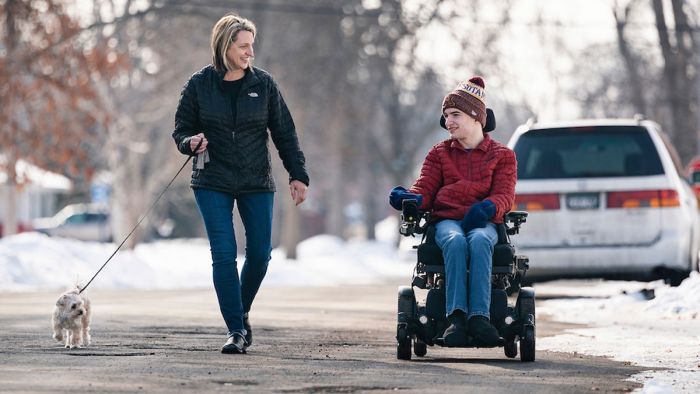The process of transitioning patients from pediatric to adult care requires a thoughtful plan—one that provides patients and their families with the skills and empowerment needed to navigate their well-being. This is especially true for patients who will not be able to live on their own; however, much of the literature surrounding this transition focuses on patients with a single common diagnosis or medically complex individuals who will live independently.
Tori Bahr, MD, medical director of pediatrics for Gillette’s Complex Care and Transition Clinic, has studied how and when to best transition medically complex pediatric patients who will not be able to live independently. This population includes patients with complex diagnoses like severe cerebral palsy, muscular dystrophy, and chromosomal anomalies with global developmental delays and cognitive delays.
Building a transition team
Dr. Bahr says that transitioning care is much like a team sport, where the patient relies on multiple players to achieve a goal. An extensive transition team is required to meet the patient’s needs, including resources from both within and outside of the clinic. This team centers around the patient and their parents/guardians and extends to include several people, such as complex care providers, primary care providers, specialists, social workers, rehab therapists, therapeutic recreation specialists, the school special education team, nurse care managers, and psychologists. The team works together to help the patient plan for establishing resources and living a life with as much independence as possible. It is suggested that providers begin having these conversations with families and patients in their early teen years, around ages 12–14.
An age-by-age guide
Below is a chart to help providers conceptualize which topics should be addressed with patients that will help them to make a smoother transition into adulthood as they age.
| Age | Topic for discussion |
|---|---|
| 12-14 |
|
| 14-16 |
|
| 16-18 |
|
| 18-21 |
|
| 21+ |
|
Get Partners in Care Stories in your inbox!
Subscribe to Partners in Care Journal, a newsletter for healthcare providers and community health professionals.
Subscribe Today Home Page
Home Page



